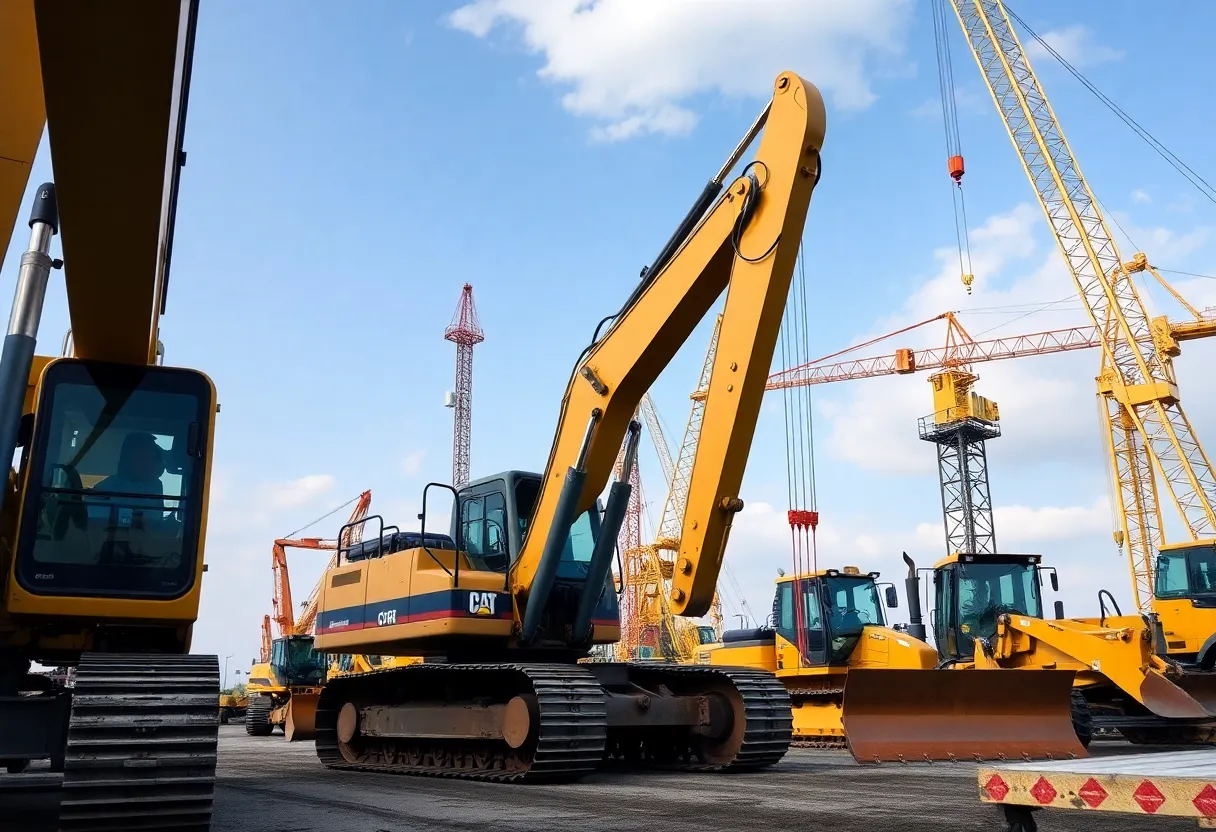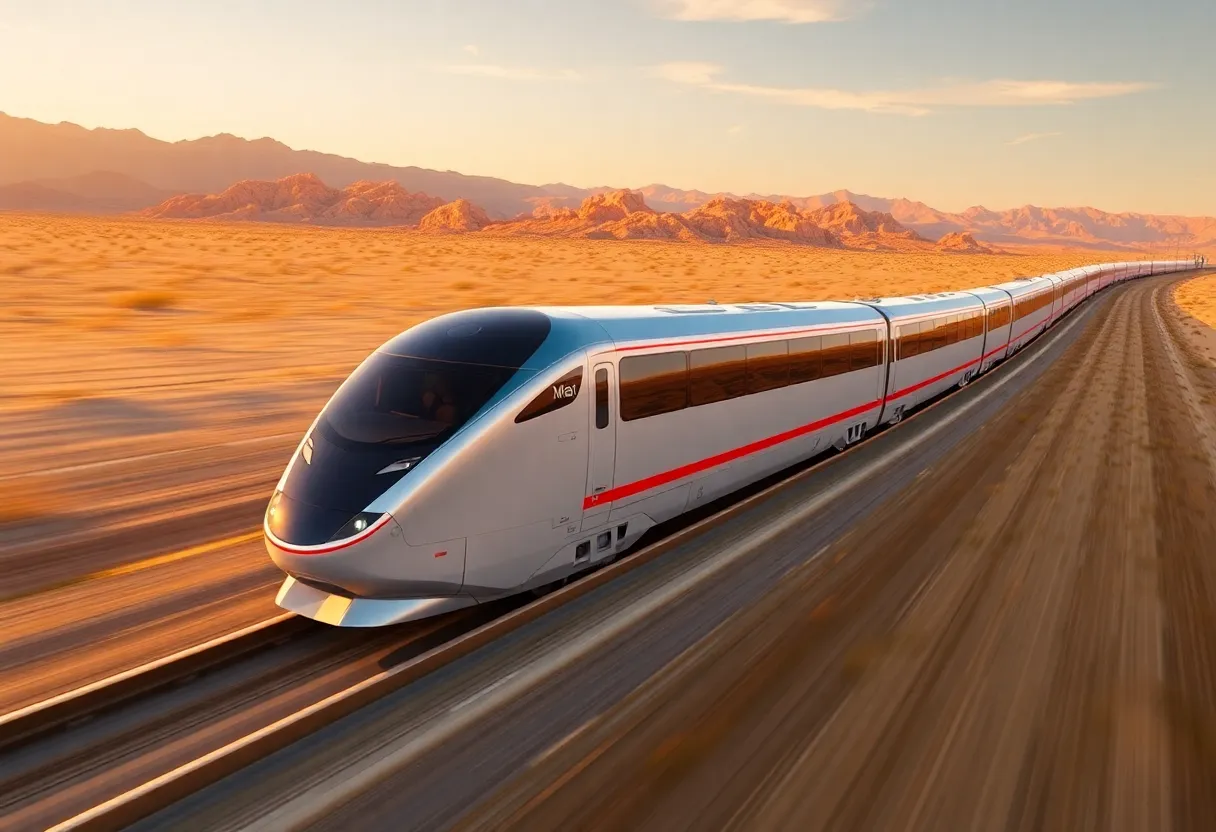News Summary
As the construction industry grapples with labor shortages and rising efficiency demands, firms are increasingly investing in heavy equipment. This strategic approach not only enhances profitability and productivity but also reduces risks and downtime. With the global construction equipment market projected to grow substantially, executives are recognizing the importance of effective equipment investment to achieve favorable project outcomes. Key factors influencing heavy machinery selection include suitability, project demands, and operator training, alongside emerging trends like equipment-sharing platforms that maximize asset utilization.
Strategic Heavy Equipment Investments Drive Construction Industry Profitability Amidst Labor Shortages
The construction industry is facing a significant shift, with strategic investments in heavy equipment playing a crucial role in enhancing profitability and productivity. As labor shortages continue to challenge the sector, the correct selection of machinery has become more important than ever before. This tactical approach is proving essential for construction firms aiming to control costs and maintain competitive advantages.
In 2024, the global construction equipment market surpassed a value of $148 billion and is expected to exceed $186 billion by 2030. Industry executives are increasingly aware of the connection between investment returns and project outcomes. By recognizing this link, companies can tailor their equipment purchases and rentals, ultimately allowing them to fuel growth and streamline operations.
Factors Influencing Heavy Equipment Selection
Choosing the right heavy equipment involves several critical factors. The machine must be suitable for specific tasks while also considering its condition, built-in features, and the overall requirements of projects. A thorough analysis prior to procurement should take into account the types of equipment needed, associated costs, availability, and the duration of use. Additionally, site-specific challenges must be thoroughly assessed to ensure smooth project execution.
For short-term needs, renting equipment can be an immediate and cost-effective solution, prioritizing efficiency over outright purchases. This flexible approach allows businesses to adapt to project demands without being burdened by excess equipment expenses. It is, however, crucial to understand the regulatory requirements and operator training necessary for any machinery involved, whether rented or purchased, to prevent delays or fines.
Maximizing Equipment Return on Investment
To achieve the highest return on investment (ROI) from equipment, companies should focus on effective training for workers. Proper training minimizes machine idling and encourages setting project-based goals. Leveraging technology can further boost operational output through data insights. Understanding equipment life-cycle assessments and maintenance needs is also essential for ensuring excellent performance throughout the project’s duration.
Utilizing data analysis tools can help track equipment usage patterns, operator behaviors, efficiency, and emissions. Through diligent monitoring, construction firms can gain valuable insights that lead to better management practices, optimizing overall productivity.
Engaging with Equipment Providers
Familiarity with various heavy equipment categories can facilitate informed discussions with manufacturers and rental agencies. Leading equipment providers in the market include Warren CAT, Alta Equipment Company, U.S. Equipment Sales and Rentals, Brandeis Machinery, and Power Equipment Company. Each of these suppliers offers a broad selection of machinery, alongside valuable support services tailored to assist construction firms in making intelligent investments.
Warren CAT, for instance, maintains an extensive range of new and used heavy construction equipment along with flexible financing and leasing options. Similarly, Alta Equipment Company provides services such as operator certification and showcases cutting-edge material handling solutions through its innovation center. U.S. Equipment emphasizes maintenance support and offers tailored financing to ensure that equipment remains operational and dependable.
Operator Comfort and New Technologies
As labor shortages persist, operator comfort is becoming a vital concern for equipment manufacturers. Features like ergonomic seating, climate control, and noise reduction are increasingly common in modern machine cabs. A well-designed cab significantly improves operator efficiency and safety by enhancing visibility and reducing vibration, creating a more comfortable work setting.
Incorporating new technologies, such as peripheral camera systems, advanced visibility features, and improved control layouts, is enhancing operator ease and safety levels. Recognizing that happy operators lead to greater productivity, manufacturers are continually refining features to alleviate fatigue and simplify machine operation.
Exploring Equipment-Sharing Platforms
To maximize the utilization of their assets outside of active projects, companies are encouraged to explore equipment-sharing platforms. Monitoring labor needs is also crucial for ensuring both safety and efficiency throughout the construction process.
Conclusion
Strategically selecting and investing in heavy machinery is key for controlling costs and driving productivity in the face of labor challenges. By understanding the market landscape and making informed decisions regarding equipment selection, the construction industry can bolster its profitability and sustain its growth trajectory.
Deeper Dive: News & Info About This Topic
Additional Resources
- The Boss Magazine: Best Heavy Equipment for Large-Scale Construction Projects
- Wikipedia: Heavy Equipment
- Barchart: Qatar to Witness Sales of Construction Equipment by 2030
- Google Search: Heavy Construction Equipment Market
- For Construction Pros: How Heavy Equipment Cab Redesigns Improve Safety
- Encyclopedia Britannica: Heavy Machinery
- Equipment World: Liugong Launches 4215D Motor Grader in North America
- Google News: Heavy Equipment News
Author: Construction CA News
The CALIFORNIA STAFF WRITER represents the experienced team at constructioncanews.com, your go-to source for actionable local news and information in California and beyond. Specializing in "news you can use," we cover essential topics like product reviews for personal and business needs, local business directories, politics, real estate trends, neighborhood insights, and state news affecting the area—with deep expertise drawn from years of dedicated reporting and strong community input, including local press releases and business updates. We deliver top reporting on high-value events such as the Rose Parade, Coachella, Comic-Con, and the California State Fair. Our coverage extends to key organizations like the California Building Industry Association and Associated General Contractors of California, plus leading businesses in technology and entertainment that power the local economy such as Apple and Alphabet. As part of the broader network, including constructionnynews.com, constructiontxnews.com, and constructionflnews.com, we provide comprehensive, credible insights into the dynamic landscape across multiple states.




